The Islands Revival project has now ended but our research on rural and island areas continues. Visit the Research on the Edge blog for futher updates. Thanks for your interest and support!


Stories of island population turnaround in Scotland and beyond
The Islands Revival project has now ended but our research on rural and island areas continues. Visit the Research on the Edge blog for futher updates. Thanks for your interest and support!

Things have been quiet but plans are afoot to “revive” the blog. Watch this space…
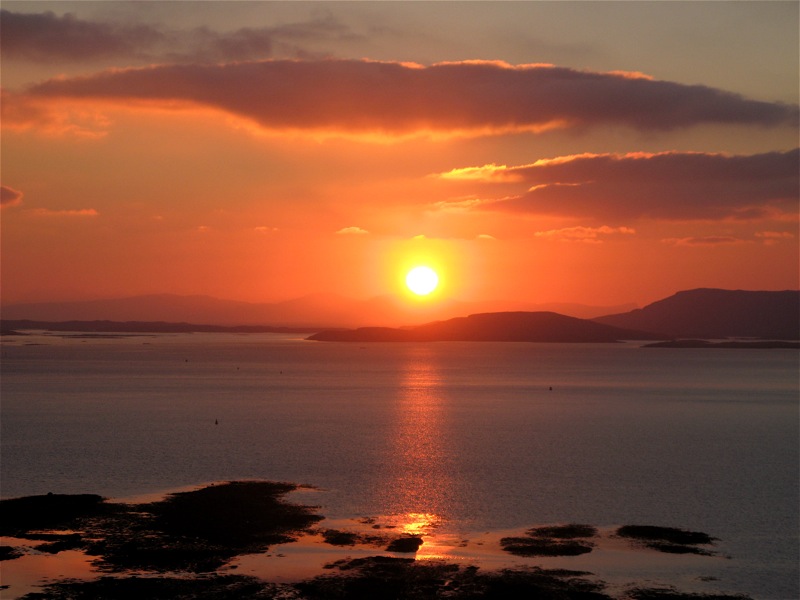
We are pleased to publish the Islands Revival Declaration, which highlights evidence of positive population change in the Scottish islands, identifies what is driving this change, and makes recommendations for how policy can support sustainable island populations.
The declaration has been very much a collaborative effort, building on evidence and lessons emerging from the blog and following on from a project workshop, held at Sabhal Mòr Ostaig at the end of August, which involved over 30 participants from community groups, public sector organisations and research institutes.
Many thanks to all those who contributed to the project and the declaration, whether through the blog, the workshop, or both.
We affirm that there is credible evidence of ‘green shoots’ of population turnaround in the Scottish islands, which as yet does not show up in official statistics.
We believe there are multiple factors driving and facilitating positive population trends in some island areas.
We believe that creating sustainable populations can be facilitated by a policy framework that is:
This declaration summarises the opinions expressed by the 33 participants in the Islands Revival Workshop at Sabhal Mòr Ostaig on the Isle of Skye, 29th and 30th August 2019 . These participants came from local government, development agencies, and the third sector, or were simply interested and well informed individuals. The discussions took place under Chatham House rules, and the declaration should not be viewed as reflecting the views of any of the organisations represented, either within the core stakeholder group, or the wider group of attendees. The declaration reflects the considered opinions of a group of individuals familiar with the demographic situation in the Islands. As such, it does not seek to anticipate, reflect or influence any particular current, or imminent policy developments.
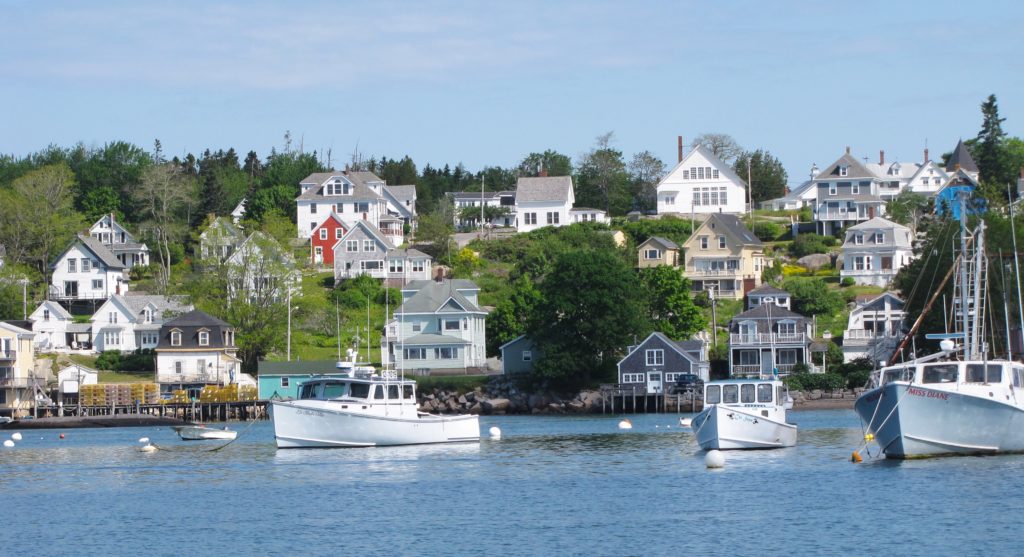
We all want what’s best for our family. In a greater sense, that applies to islands as well. For those of us who live year-round on islands, that community becomes your family. As the old saying goes, “You can choose your friends, but you can’t choose your family.” I’d like to amend that to, “You can choose your friends, but you can’t choose your fellow islander.” Like any small community, island life can be a struggle, but there is almost nowhere else that islanders would rather be—and that never makes it easy.
As it has for the past 36 years, our work at the Island Institute focuses on helping Maine’s 15 unbridged, year-round island communities and 105 coastal communities obtain access to the resources they need to create sustainable local economies. We want to ensure that these communities are not left behind in terms of infrastructure, educational support, and economic sustainability.
At the Island Institute, we focus on three areas of strategic priority: Strengthening Community Economies, Enhancing Education & Leadership, and Delivering & Sharing Solutions.
If people in the communities in which we live cannot work, then the community withers. Traditional water-based industries have shifted in recent years. Although fishing, specifically lobster, is still the main economic driver for many communities—that, too, is shifting. Seeing changes in the lobster fishery, and recent challenges like bait shortages, we recognized the need to help fisherman diversity their livelihoods so they could continue working on the water. Created in 2015, our Aquaculture Business Development program invites applicants to be one of the 25 participants that we support in a year-long program that provides, free of charge, all of the basic instruction and support to get in the water and start an aquaculture business in mussels, oysters, scallops, or kelp. Now in our fourth year, we have had over 122 participants in the program since the first class was started in 2016 and have seen 30 new businesses created. In this year’s class, 72% are lobstermen, our highest percentage yet. This is a key indicator, for us, that many lobstermen see the need for diversification to ensure long-term stability, remain on the water, and weather the ups and downs of their primary industry.
It isn’t only about fishing though. Many communities have small businesses that focus on the “summer communities” of vacationers, many of whom have had homes in that community for generations. Our small business program works with businesses to help them with planning, financing options, and ideas to start new businesses or grow the ones they have. Our work in the area of broadband expansion for rural communities has led some communities to gain the high-speed broadband access they need and attract young families whose jobs are location-independent or inspire them to start businesses that can be based anywhere there is fast, reliable internet access. I am a prime example of this. I live on the island of Islesboro and my daily commute to the office takes a little more than an hour with separate cars on both sides and a ferry in-between. Our island’s municipal broadband system allows me to work from home two days per week and participate in meetings through teleconferencing. It’s a thirty-second commute to my island office, allowing me to be more productive. By commuting only three days out of the week I save my family $1,000 per year in ferry tickets alone.
We also work extensively with islands and coastal communities on affordable, renewable energy solutions to help create alternatives for small communities by providing the technical expertise they need to make the right decisions for their individual needs.
One of our greatest areas of concern is climate change. Penobscot Bay, one of the areas in which we work and the home to many of our island communities, is warming faster than 99% of the world’s oceans. The lobster stock is shifting location, and we are witnessing a fishing industry that is becoming a lobster monoculture. In addition to our Aquaculture Business Development program which helps fishermen diversify, we help communities plan for sea level rise. We provide grants and technical assistance for communities looking to the future and planning for the impacts that rising sea levels will have on their waterfronts and downtowns. In at least one case, sea level rise could potentially turn one island into two islands, causing a low-level area mid-island to become submerged.
Realizing that all of this cannot be done just by providing grants and technical assistance, education of our young people and all community members is key. Through our ILEAD (Island Leadership Exploration and Development) programs, we offer seminars on everything from sea level rise planning and island historical societies to municipal leadership training and nonprofit board management. By pulling key community members, outside experts, and a facilitator into the same room, we can help develop community-based programs and strategies for a particular subject area.
Our Island Scholarship program and travel scholarships provide island and coastal students with grants to travel as well as annual renewable scholarships for post-secondary education. Recently, two local students have made use of those funds for a month-long summer institute in Paris, a German study-abroad program, and received annual scholarships to help pay for their college educations. Even as we focus on increasing educational opportunities for young people, we also provide assistance to teachers in island or isolated schools that gives them the opportunity to interact with peers, share best practices, and realize that many of them are facing the very same challenges.
For 20 years, the Institute has offered its Island Fellowship Program to communities. Island Fellows are recent college graduates who commit to a one-year program, with an option to extend for a second year (most do), and are placed by the Institute in an island or coastal community to work on specific projects identified by the community. The host community contributes less than 20% of the annual cost of the Fellow, the Island Institute provides the remaining financial support, training, and mentorship throughout the time that the Fellow lives and works in the community. Fellows have worked on an unbelievable range of projects from water quality issues and early childhood education to comprehensive plans for municipal governments and theater and arts education. In all cases it is a project, or pair of projects, chosen by the community. Each community commits financial support for a portion of the costs, and provides a mentor on the island who works with the Fellow throughout their placement. Fellows are our most visible daily presence in many of these communities.
Since Island Fellows aren’t available for every community, we also help keep communities informed through our monthly, free newspaper, The Working Waterfront, our annual Island Journal, and our annual Waypoints publication providing in-depth data analysis of our coast and its communities, and our “What Work Solutions Library” that offers real-world solutions to common island and coastal challenges and shares them through a digital library, providing the opportunity for others facing the same challenges to learn from each other.
Finally, as a community development organization, we realize that the work we do can also be of assistance to communities and organizations outside of the State of Maine. We have worked with island communities in the Great Lakes, Alaska, and the southeast US coast, as well as with renewable energy partners in Denmark. We only strengthen what we do and the coast that we serve by learning from and interacting with others in situations similar to ours.
The Island Institute is focused on helping island and coastal communities remain viable for generations to come. While our work often evolves and changes with needs of our communities, we have found that our greatest successes happen when we create, maintain, and nurture strong ties within the communities we support. In the next 12 months we will be creating our next strategic plan, which will carry us forward as an agent of change for Maine’s island and coastal communities for the next three to five years. Although titles may change and programs may end or begin, the constant will always be, as our mission states, that “The Island Institute works to sustain Maine’s island and coastal communities, and exchanges ideas and experiences to further the sustainability of communities here and elsewhere.”
Why am I writing about a farm in Perthshire, about as far as you can get from the sea on mainland Scotland, on a blog about Island Revival? Good question! The thing is, though Comrie Croft is not surrounded by ocean, in many respects, farms and small rural communities on the mainland run the risk of becoming ‘islands’, isolated and disconnected from economic opportunities, services, culture, spiritual and social life and without the means to sustain themselves. Recognising that our parish has been severely depopulated over the past 200-300 years and that similar processes continue today, Comrie Croft was established to counter the forces of ‘island isolation’ and to demonstrate that things don’t have to be this way: there are so many opportunities for land-based businesses to have positive impacts on their community and local environment.
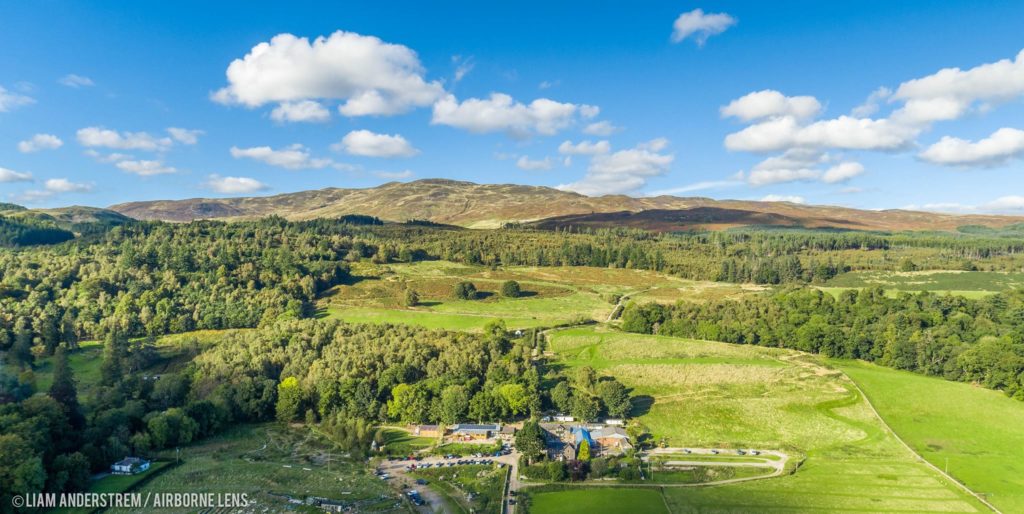
Growing out of a traditional mixed farm which couldn’t support one household any more, Comrie Croft was purchased by its employees, family and supporters within the local community back in 2008 (50 in total). Within its 231 rough acres, Comrie Croft has given birth to a complementary mix of enterprises, infrastructure and activities designed to work together synergistically, like an ecosystem, on the most environmentally and socially sustainable basis possible. To begin with there was a bunkhouse, sheep-grazed pasture and woodlands. Now there is a thriving wild-style campsite and glamping using in-house designed and built Nordic tipis which stay dry and cosy whatever the weather, Tomanh’a Market Garden – a flower farm and market garden growing wildlife-friendly healthy food for local eating, The Tea Garden Café which uses lots of the produce from the market garden, a farm shop selling produce from the market garden and many other local producers, a DIY barn wedding venue where couples are encouraged to use the many excellent local caterers and suppliers, free to use mountain bike trails (rated #1 in Scotland) and Comrie Croft Bikes – a full-service bike shop, Flow School mountain bike guiding and coaching, Strathearn Mountain Biking Club, The Scottish Tea Factory – Scotland’s first tea processing and tea workshops facility, and The Wee Event Hire Co.
On the drawing board is an 8-household off-grid, affordable co-housing development using local, low processed building materials and a micro-brewery. By spending as much cash locally as possible, and encouraging guests and visitors to do the same, the Croft attempts to amplify economic benefit to the area. There is also a strong focus on employing people on permanent, full-time, year-round contracts – 27 at the last count. This is good for the business as it builds skills and experience, whilst also enabling people to build their lives in the area. There is a cost to pay in the winter, but efforts are always being made to get the public to experience the joys of winter camping!!
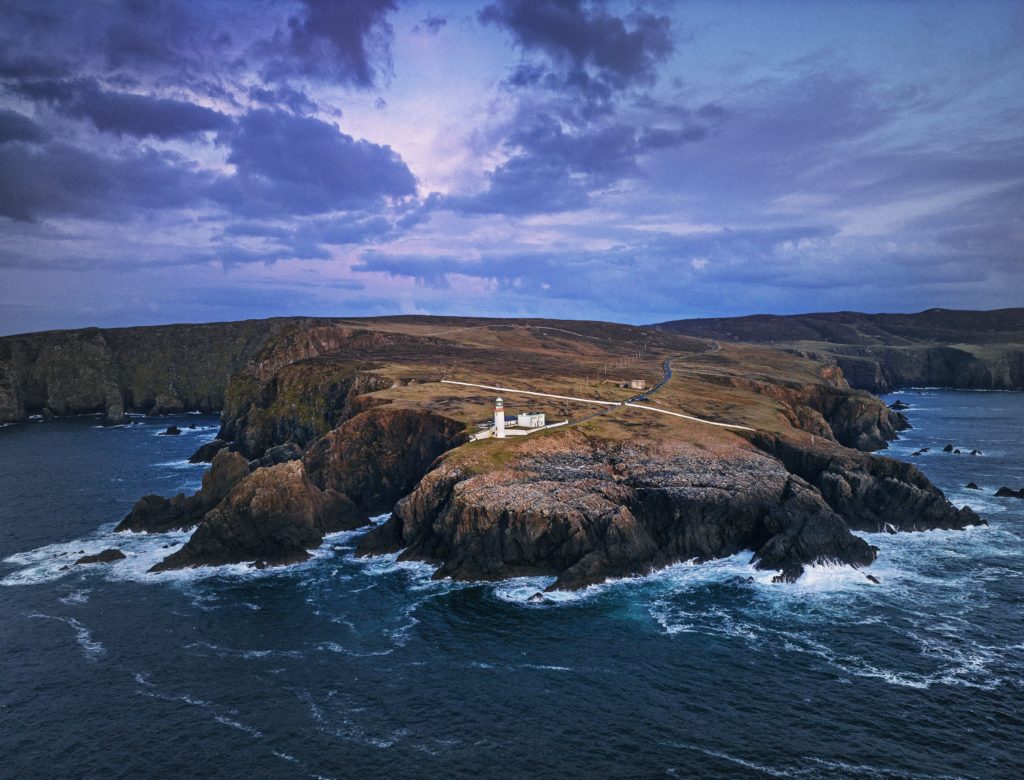
In a world where life seems to be moving faster than ever, it is sometimes difficult to strike a balance between being productive in the working world while still being able to maintain a good quality of life. It is not always easy to find a workspace which provides what is needed for one to excel in their chosen field of work while still being able to live in an idyllic setting. Imagine having a five-minute commute from your front door to your office, and being able to sit in a modern, luxurious workspace at a desk overlooking a beach and rolling waves, while still having access to highspeed internet connectivity and state of the art web conferencing facilities as good as you would find in Dublin, London or New York.
While this might seem like a dream, it is now a reality on Arranmore Island, County Donegal. With less opportunities for employment in traditional industries such as fishing and farming, many of the island’s school leavers in recent years have been moving into industries on leaving third level education far removed from what used to be the norm, leading to Arranmore’s youth moving away from their home place in search of work. In an attempt to turn the tide on the need for islanders to have to leave their home place, in 2017 Arranmore Island Community Council embarked on a project called #Cominghome and asked the Arranmore diaspora what was needed to make Arranmore Island a place they felt they could return home to live once more. From that survey it was clear that while Arranmore had so much going for it, what was missing was employment opportunities and highspeed broadband to allow those who could work remotely to do so from Arranmore.

With funding from the Department of Community and Rural Development obtained through Donegal County Council, the island’s council set about establishing a digital hub in which would be a shared workspace with reliable highspeed internet. By Spring 2019, this project had come to fruition and Arranmore Island is now able to boast about having Ireland’s first offshore digital hub. Named MODAM, an abbreviation of Mol Oifig Digiteach Arainn Mhor, the new community run initiative has gained global interest. This is in part due to an advertising campaign by Three Ireland who have worked in partnership with the island council to supply internet connectivity to the hub and the wider community. But also with assistance from the creative media company Boys & Girls the island council have sent out an open letter to the world announcing that Arranmore’s digital hub and indeed other businesses on the island are now open, ready and able to interact with others around the world with their new improved internet connectivity.
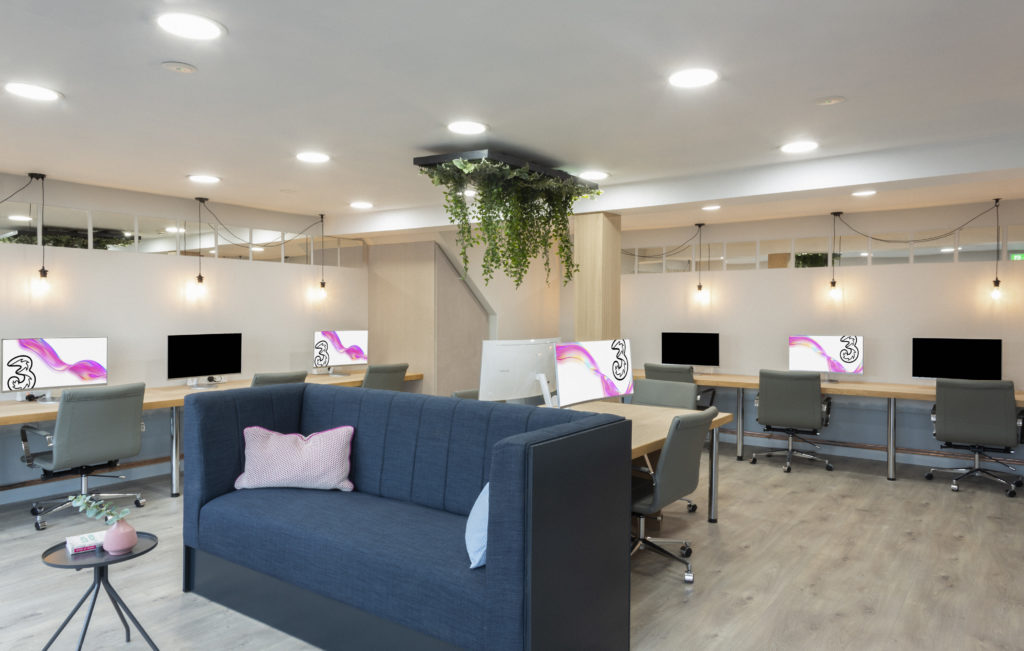
The digital hub is already a place where islanders who can work remotely frequent. In a very short space of time the diaspora have quickly caught on to the idea of being able to extend their holidays on the island, in some cases trebling the length of their normal time “at home”, being now able to work while they are there. Bookings for desk space in MODAM during the summer months are already being made by the diaspora and there is now talk of individuals thinking of moving home to the island to live once more now they have a facility which allows secure, fast reliable internet. There are even islanders considering taking on a new career which would allow them to work from Arranmore and the island council have already been working with Grow Remote to show those interested how they can make such a move.
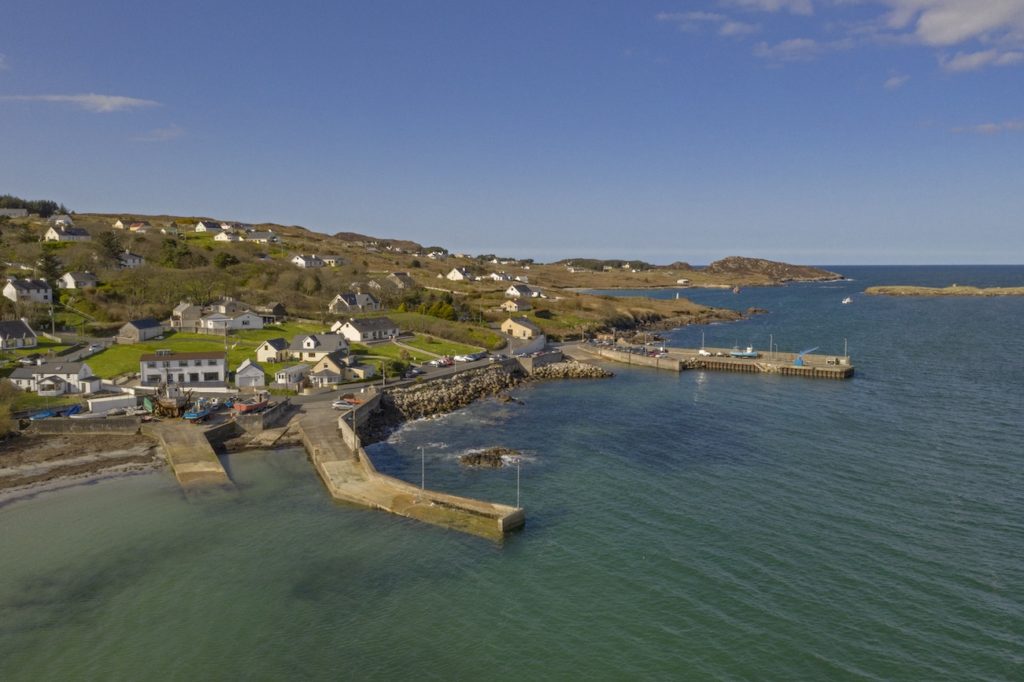
But it’s not just the diaspora they are reaching out to. Arranmore Island Community Council are also very aware of the digital nomad market, individuals who like to travel and are able to work from anywhere in the world as long as they have the connectivity to do so. Such digital nomads can now travel to a unique and idyllic location such as Arranmore Island and work in a space which is as modern and fresh looking as any new office in any major city in the world. Not only does it have the office space, but it also has a break out room for meetings and state of the art video conferencing facility all using technology thanks to partnerships with Samsung and Cisco. The facility even has en-suite accommodation on site. Not only that, but right on the doorstep of MODAM is a golden beach where you kayak or sail, and endless country lanes to explore, on foot or by bicycle which you can hire from the island community centre. And all this in addition to the several bars, cafés and self-catering accommodation also available on the island. Far from being a quaint throwback to Ireland of years gone by, Arranmore Island is a vibrant community which, with the addition now of MODAM, is the ideal place to strike that perfect work/life balance. With nearby Donegal airport providing 45 minute flights to international airports such as Dublin and Glasgow, Arranmore Island is on the doorstep of the world, and might now well be the pearl in the world’s oyster.
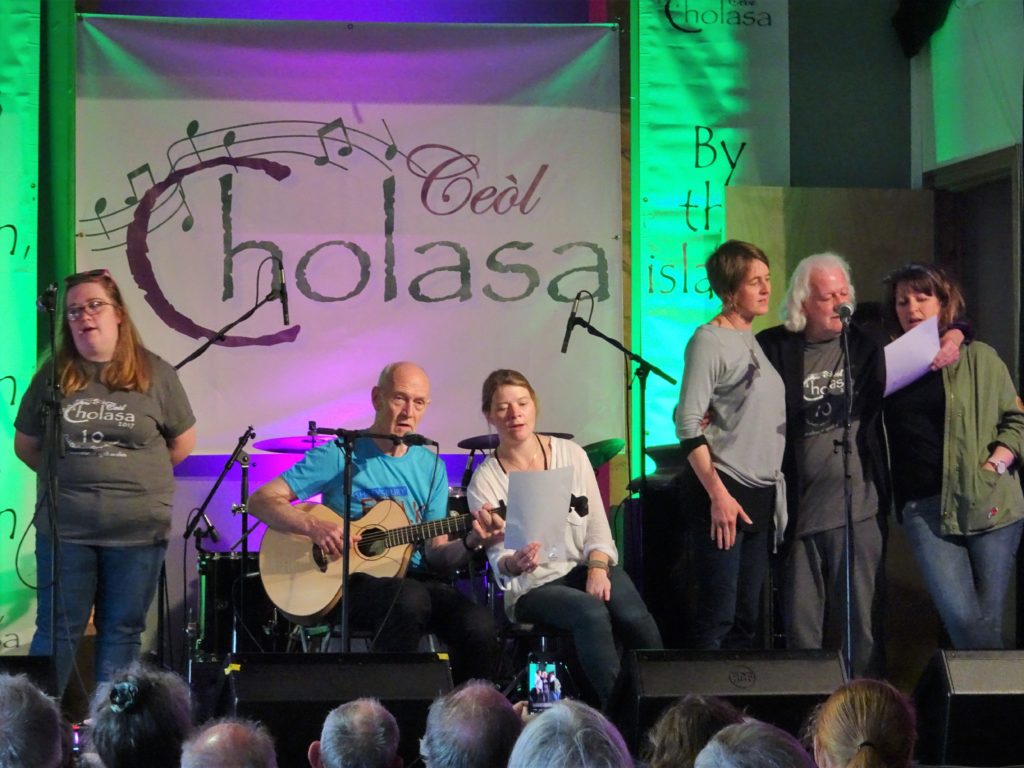
A wedding held on Colonsay this summer was cause for celebration, not only because the young couple were expressing their commitment to one another, but because they had decided to make their home on the island. The Registrar who married them has herself recently moved to the island with her partner. Another young couple, who were married on the island a few years ago, have just taken over the running of the Colonsay Hotel.
There are currently around 10-12 people in their 20s and 30s, most with family links to the island, trying to make a go of living on Colonsay. Some will stay only a few years, perhaps long enough for their children to attend the tiny primary school; others may put down roots. A disincentive for some families is that secondary-age children have to go to school on the mainland, returning home by plane at weekends.
The population of Colonsay has shown modest increases at the last two Censuses: 106 in 1991; 113 in 2001; 132 in 2011. Although the upward trend will probably not continue in 2021, it appears that the island can comfortably sustain a population of 120-130. But it is important to look behind the figures, at what is actually happening in the Colonsay community.
Colonsay has experienced enormous economic, demographic and cultural transformation in the last 40 years. In the 1970s, most people were involved in agriculture, either crofting or small-scale farming, and Gaelic was the language of day-to-day conversation. In 2019, the island is largely dependent on tourism, particularly self-catering accommodation, and only a handful of people are still fluent in Gaelic.
But Colonsay is thriving in its own way, even though its success remains precarious.
Local businesses include a café, two craft shops/galleries, a bookshop, a brewery, and a bike hire business, in addition to the shop, post office and the all-important accommodation providers. Many islands, these days, have a gin distillery – Colonsay has two! The one independent farm on the island sells its own meat, as well as a range of wool products. A fish farm off the east coast provides a number of jobs. The local development company decided, some years ago, to create new crofts, in the hope of attracting younger families.
Colonsay has also become known as a ‘festival island’, with events including the Ceòl Cholasa music festival, a book festival, the Spring Festival (focussing on craft activities and guided walks) and the Autumn Festival of Food and Drink. It all helps to extend the ‘season’ of economic activity, and keeps the place buzzing with creativity – and hope for the future.
It’s well known that Scotland has an extraordinarily concentrated pattern of private land ownership. Around 80% of the nation’s land is privately owned and half of that private land is estimated to be in the hands of fewer than 500 owners. In contrast, less than 3% of Scotland’s land is in community ownership. The most recent data from the Scottish Government estimates that as of 2017 there were 547,690 acres in community ownership. Remarkably, 70% of that total (384,980 acres) is located in the Western Isles.
Why should it be that these Hebridean communities, often characterised as ‘remote’ and ‘fragile’ are in the vanguard of the quiet revolution that is community ownership in Scotland? Historical, political and cultural factors combine to offer some important clues. The Western Isles are blanketed by crofting estates, many of which have served as trophy assets for absentee private landowners unwilling or unable to invest in the sustainable development of the land – and, by extension, the communities – that they controlled from afar. As an antidote to what might at best be described as the benign neglect experienced under private – and in some cases, state – landownership, Hebridean communities have increasingly mobilised to bring the land on which they live under their own control. A progressive policy environment in the form of Community Right to Buy legislation and financial support through the Scottish Land Fund have both been critical factors in enabling that to happen. Comhairle nan Eilean Siar’s recognition of the strategic importance of community ownership as a means for economic regeneration within the Western Isles has also played a vital role in accelerating that process.
These factors have together created a domino effect whereby successive island communities have assumed ownership of their land and set about reversing decades of economic and social decline with – as other contributions to this blog series illustrate – hugely impressive results. For children growing up in Galson, Carloway, Barvas, Pairc, North and West Harris and elsewhere in the Western Isles, community land ownership and the benefits flowing from that are a normal part of their everyday lives. That’s a self-evidently good thing.
It’s clear that normalising community ownership in the Western Isles has been instrumental in transforming the futures of these islands’ communities by helping to reverse population decline and by providing much needed affordable housing, economic development, community facilities and environmental improvement. Perhaps most importantly of all, it underscores the right of these communities simply to ‘be’ and the compelling public interest case for ensuring that they continue to flourish.
There’s much still to do at a policy level to ensure that normalising community ownership continues, both for Scotland’s islands and other rural communities. Most immediately there’s a need to ensure that the community right to buy land to further sustainable development (which does not require a willing seller) currently being consulted on by the Scottish Government offers a genuine prospect of delivering more land into community ownership where it is in the public interest to do so. It’s vital also to secure a political commitment that the Scottish Land Fund, which allocates £10 million annually in support of community land purchases, will continue to operate after the 2021 Scottish Parliament election with at least the same level of funding in place.
In the longer-term it’s incumbent on policymakers to ensure that Scotland’s land reform agenda is hard-wired into other spheres of public policy. That requires a shift from the silo-mentality characterising much of public policy-making generally. Critically, it also requires the political imagination to deploy the array of legislative, fiscal and informational policy levers at Government’s disposal in ways that enable land reform to deliver sustainable outcomes for our islands and other rural places.
I live on Prince Edward Island, which is a small island province on Canada’s east coast. With a population of just over 153,000, we are often considered to be a rural province because of our rural agricultural landscape; indeed, most of the population lives outside our two small cities, Charlottetown and Summerside. The Island has a long history of in-migration, starting with the Mi’kmaq 10,000 years ago. European settlers began arriving in the 1700s – predominantly Scots, Irish, and English – followed in the late 1800s/early 1900s by the Lebanese, Chinese, and Dutch. But, over the years, like most developed countries around the world, birth rates declined and the population aged as our youth continued the tradition of leaving the Island to further their education or find better job opportunities – or just get away from home. This includes my own two daughters who now live and work in England and Alberta.

Recognizing that prosperity depends on people on a small island with few natural resources beyond agriculture, fisheries and tourism, in 2000 the provincial government hired us at the Institute of Island Studies (IIS) to undertake a population strategy. The 55 recommendations took a holistic approach encompassing a broad spectrum, from the role of communities to economic development; from children, youth, and seniors to education, health, transportation, and housing; from land use and development planning to immigration – both interprovincial and international, including a category called “Islanders away.” The result was a steady increase in population, led mostly by international immigration from China, India, Vietnam, Philippines, Nigeria, and Syria. Since 2007, PEI has consistently led the four Atlantic provinces in population growth and in 2017 published Recruit, Retain, Repatriate: A Population Action Plan for Prince Edward Island to ensure the trend continued.
In 2018, in a bid to create evidence-based policy-making around that last word – Repatriate – the PEI Department of Workforce and Advanced Learning contracted us again to undertake a research project to determine the opportunities for and barriers to Islanders returning home. In tandem with staff we designed a 26-question survey using Survey Monkey that would go to alumni from our three post-secondary institutions (UPEI, Holland College, and College de l’Ȋle); a link was also posted to a “WorkPEI” Facebook page and was sent through the IIS’s communications channels. An Islander was defined as “someone who has lived or visited the Island but currently does not live on PEI.” By March 15, 2018, we received 683 responses. Questions included closed and open-ended questions.
You can find the full report, entitled Recruiting Talent to PEI, here, but what we found in general was that people wanted to come back to PEI for many reasons – family and quality of life being at the top – but were mostly prevented by lack of meaningful, well-paid employment. There were other concerns, of course, such as housing, childcare, health, open-mindedness, and having to leave family behind in their new homes. As one person said, “The things that make PEI so appealing are also obstacles to moving back. I love that PEI is small and rural, but that also means fewer job opportunities in my field.” But the Island’s lure is strong, as evidenced in the emotional responses we received. Here’s my favourite: “For me, there is an unspoken truth and ease about who I really am and how I fit in when I’m on the island. As [poet] Milton Acorn said when he moved back to the island for good in 1981, ‘I know where I am here.’”
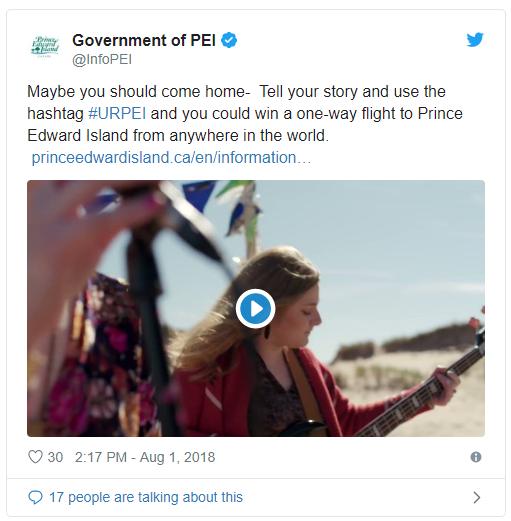
The government released the report as part of a campaign called “Maybe you should come home.” It’s probably too soon to tell if it’s working, but I’m hoping to add my two daughters – and their husbands and children – to the population statistics that include Islanders returning home.
The Isle of Kerrera is a rugged wee gem, situated at the mouth of Oban Bay. The island is around 7 km long and around 2 km wide. There are stunning views, ample nature and wildlife to be spotted and great walks, helping the island to attract upwards of 15,000 visitors annually. Amenities are limited- at the north end of the island is Oban Marina, with the Waypoint restaurant. At the south end, close to the ruins of Gylen Castle is the Kerrera Tea Garden and Bunkhouse.
In 2011, the national census had the Kerrera population at 34. By 2015, the population increased to 44 (34 adults, 10 children), then in 2017 another increase to 55 (42 adults, 13 children) . Another jump to today, June 2019 and the island has a full time resident population of 68 – 49 adults and 19 children. When you add the part time population (two second homes, returning grown up children and care home staff and teenage residents) the figure goes up to 84, and then when seasonal staff and overnight guests are included- a full head count on Kerrera could go up to 115 people. This figure harks back to times past, when in the 1700’s, Kerrera had a population of almost 200.
This shift in our demographics is a positive challenge for the island. The population has grown by 100% (100%!!!) in the last seven years and we have experienced a mini baby boom with 25% of the population now under 16, along with an increase in the number of multi generational families living on island. We are also an unusual island in having a very low percentage of second or holiday homes . These factors taken together create an atypical small island demographic which is currently driving a feeling of vitality.
There are exciting developments regarding the community purchase of the old primary school building in the centre of the island and the plan is to turn this into a multi purpose community centre. The Isle of Kerrera Development Trust secured funding from the Land Fund for the purchase and now have a Project Manager in place to secure the funding and oversee the renovations.
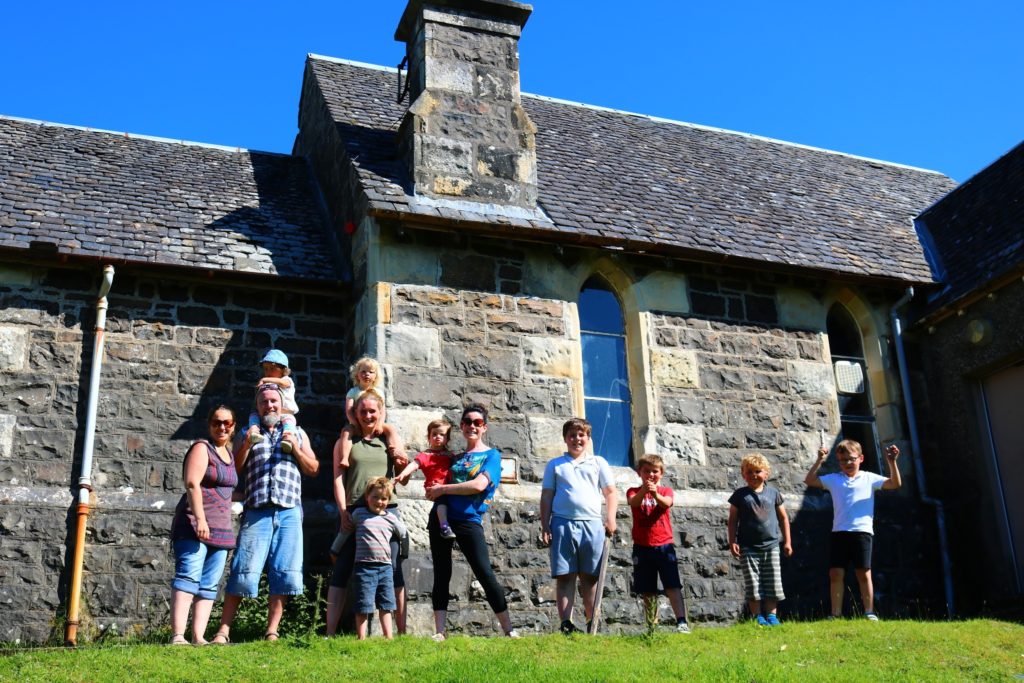
However, currently- there are no facilities on the island; to access shops, fuel, banking, post office, health services, school and education, the islanders go to the mainland. The marina run a private boat service during the summer season, but the last public Calmac ferry is at 6pm. There is no connecting road between the north and south of the island. Some of these issues are viewed by the community as challenges and some of these are simply differences to the mainland, which are valued by residents. The island population may be small, but the community is energetic and passionate and residents are keen to protect the island’s unique character.